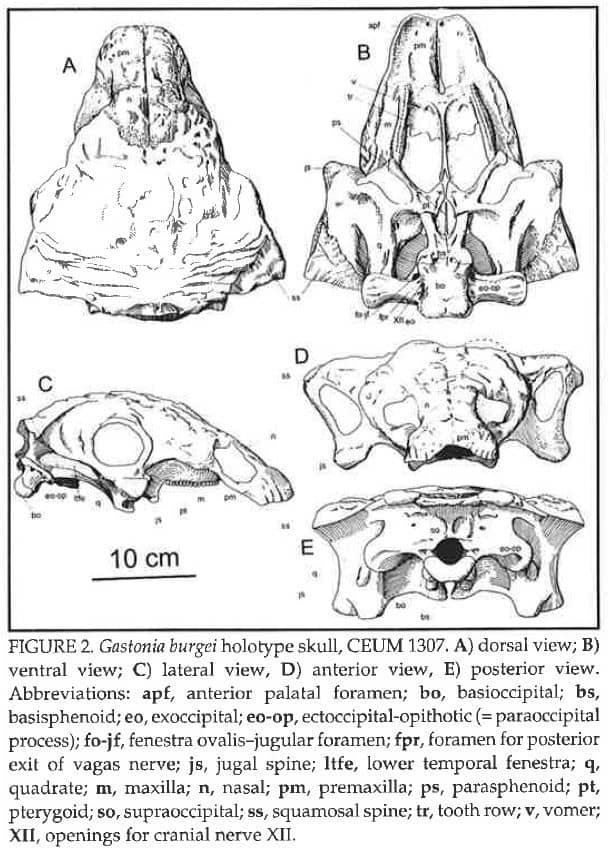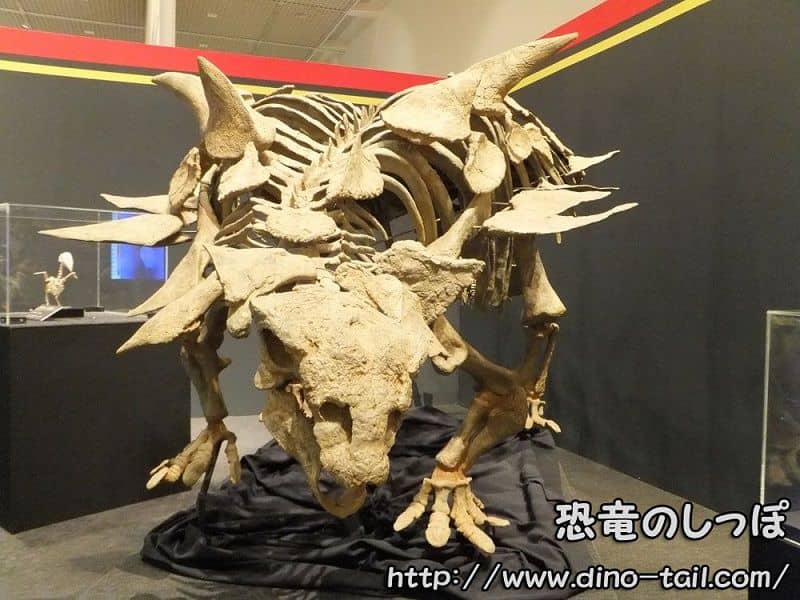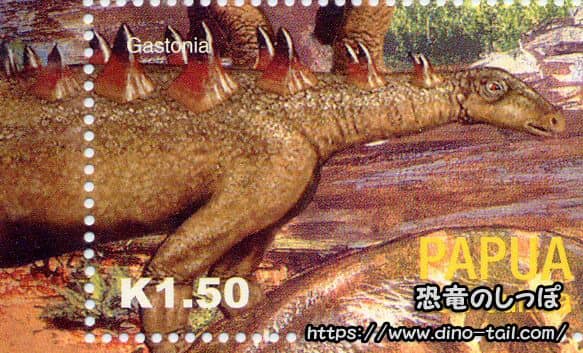About Gastonia
| Scientific Name (Genus) | Gastonia |
| Meaning of Name |
Gaston's lizard
Gaston [Personal Name] -ia [Latin suffix] |
| Classification | Ornithischia, Thyreophora (Ankylosauria, Nodosauridae ) |
| Total Length | Approx. 6m |
| Diet | Herbivorous |
| Period | Early Cretaceous |
| Species |
Gastonia burgei
(type species)
Gastonia lorriemcwhinneyae |
| Year of Paper Publication | 1998 |
| Genus Name Publication | Kirkland, James. (1998). A polacanthine ankylosaur (Ornithischia: Dinosauria) from the Early Cretaceous (Barremian) of eastern Utah. New Mexico Museum of Natural History and Science Bulletin, 14. |
Characteristics: The Walking Fortress

Gastonia was a heavily armored nodosaurid dinosaur that lived in North America during the Early Cretaceous. It was about 6m long and is estimated to have weighed nearly 2 tons. Its entire body was covered in bony plates (osteoderms) that evolved like armor.
Particularly prominent were the giant spikes on its shoulders and a massive, single-piece bony shield called a "sacral shield" that covered its hip region. This shield was formed by the fusion of multiple osteoderms, completely protecting the vulnerable hip area.
Although it did not have a tail club like Ankylosaurus, its tail was lined on both sides with flat, sharp, blade-like bony plates , which are thought to have been used as a powerful weapon to slash at the legs of predators by swinging it from side to side.
Gastonia fossils are sometimes found in "bonebeds," where numerous individuals are preserved together. This is strong evidence that they lived in herds rather than alone.
Discovery and Publication

Source: Kirkland, James. (1998). A polacanthine ankylosaur (Ornithischia: Dinosauria) from the Early Cretaceous (Barremian) of eastern Utah. New Mexico Museum of Natural History and Science Bulletin, 14.
In 1989, a skull fossil of an armored dinosaur was discovered in the Cedar Mountain Formation of Utah, USA. It was excavated along with the carnivorous dinosaur Utahraptor.
In 1998, American paleontologist James Kirkland described the new genus and species Gastonia burgei.
The genus name "Gastonia" is said to have been given in honor of the American paleontologist Robert Gaston, who discovered it.
Later, in 2016, a second species, Gastonia lorriemcwhinneyae , was described from a younger layer of the same Cedar Mountain Formation. This suggests that the genus Gastonia thrived for a long period of time.
Gastonia Stamp & Fossil Gallery




